Obviously, the idea is not to print a whole gas turbine – AM is still very expensive. That’s why it’s the complex high-value parts, namely those exposed to a high-temperature environment using internal air cooling, that are prime candidates for being printed – such as burners, guide vanes or heat shields.
For example, the standard burner in Philippsthal used to have 13 individual parts. In 2018, Navrotsky’s team in Finspång managed to manufacture it in one solid piece with complex fuel channels under its surface. It’s similar with the guide vanes for Stage 2 of the Philippsthal-turbine, also AM manufactured in Finspång, Sweden, and installed in summer 2020.
In order to improve their aerodynamic performance, they had to be produced with a thin trailing edge. “This helped with the cooling of the vane. But what helped even more in this regard, were in-wall cooling channels. Both these channels and the thin trailing edge could only be achieved with the help of AM”, says Navrotsky. The consequence: cooling air consumption is significantly reduced.
Alternatively, with the amount of cooling air staying the same, the temperature of the part could be lowered even further and therefore extend the turbine’s vanes lifespan. Either way, the turbine’s performance is improved.






